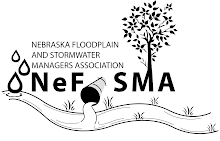ASFPM Announces Position of Associate Director - Operations
Closing Date: March 3, 2011
Join a mission driven non-profit organization established to promote education, flood related policy, and activities that reduce current and future flood losses and protect natural and beneficial functions of floodplains.
The Association of State Floodplain Managers (ASFPM) is actively seeking an Associate Director – Operations to assist the Executive Director in duties including administration, project management, certification program, member service activities, and national flood policy. ASFPM is a national, nonprofit, professional membership association with 14,000 members and 29 chapters throughout the U.S., and an operating budget of nearly $2 million. This is a permanent full-time position located in the Executive Office in Madison, WI. The position is currently filled, but the individual in this position has submitted his resignation. In order to facilitate a smooth transition, ASFPM plans to fill this position before the incumbent leaves.
We would greatly appreciate you sharing this announcement with your colleagues through your newsletters and websites.
Primary responsibilities:
• Manage ongoing day-to-day operations of the Association
• Supervise ASFPM staff
• Oversee financial and records management
• Oversee the Certified Floodplain Manager program and serve on its Board of Regents
• Support work planning, conferences, workshops, and meetings
• Maintain relationships and oversee agreements with contractors, members, and partners
• Oversee the Association’s Information Technology (IT) process and activities
• Supervise publications, projects, professional certification activities, and contracts
• Assist the Executive Director with liaison and national policy initiatives
Required qualifications:
• Strong written and oral communication skills
• Bachelor’s degree in a field related to floodplain management
• Minimum five years experience in progressively responsible management positions
• Direct experience in floodplain management
• Demonstrated proficiency with all aspects of financial management
• Effectively supervise staff to achieve goals of organization
• Ability to take initiative to accomplish broad goals
• Develop, refine, implement, and evaluate administrative procedures
• Knowledge of and direct network experience among FPM industry players and issues
• Experience in project development and completion
• Passion for the ASFPM mission and goals
• Certified Floodplain Manager (or obtain within 6 months of hire)
The application closing date is March 3, 2011. Interested parties should view the full position announcement at
View Position Description. To apply, please send your resume, a cover letter, two writing samples, and examples of previous management experience to Diane Brown, Communication and Events Manager, at
diane@floods.org
